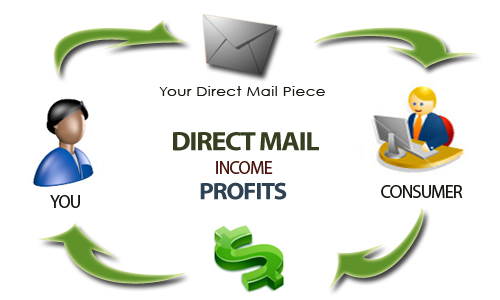–noun [di·rect'-mail]
Overview
Direct marketing is a form of advertising that reaches its audience without using traditional formal channels of advertising, such as TV, newspapers or radio. Businesses communicate straight to the consumer with advertising techniques such as fliers, catalogue distribution, promotional letters, and street advertising.
Direct Advertising is a sub-discipline and type of marketing. There are two main definitional characteristics which distinguish it from other types of marketing. The first is that it sends its message directly to consumers, without the use of intervening commercial communication media. The second characteristic is the core principle of successful Advertising driving a specific "call-to-action." This aspect of direct marketing involves an emphasis on trackable, measurable, positive responses from consumers (known simply as "response" in the industry) regardless of medium.
If the advertisement asks the prospect to take a specific action, for instance call a free phone number or visit a website, then the effort is considered to be direct response advertising.
Direct marketing is predominantly used by small to medium enterprises with limited advertising budgets which do not have a well recognized brand message. A well executed direct advertising campaign can offer a positive return on investment as the message is not hidden with over complicated branding. Instead direct advertising is straight to the point, it offers a product, service or event and explains how to get the offered product, service or event.
Real World Experience
Many of my clients tell me, "We've tried direct mail and it didn't work." This experience leaves me asking, "Why do some programs not perform as well as expected, while others succeed beyond a company's wildest dreams?" According to the Direct Marketing Association (DMA), direct mail can pull in response rates as high as 15% or as low as 0.03%. With such a large gap, it is easy to see why many companies have lost their faith in this very popular marketing practice.

Over the years I've learned how well a direct mail program performs depends on the chemistry of three elements - format, offer, and list - and whether or not you have designed the program with enough frequency and follow-up triggers built in. But before you can pull these three elements into the most effective program possible, you need to first determine:
» The goal of the direct mail piece (For example, is your goal lead generation or direct-to-order?)
» The current relationship you have with the list. Is it a cold list or has qualification already occurred? (For example, have they already attended a seminar or webinar of yours or downloaded something from your website?)
» Then follow this advice as you design your direct mail program:
» FORMAT. Direct mail comes in a variety of formats-the postcard, the business letter, or the 2-D or 3-D package to name just a few. The truth is, all three of these formats pull about the same percentage of responses, when used correctly. The magic then is to choose the format most suited to reach your goal and specific audience.
» OFFER. The offer is a critical element to a successful direct mail effort. From my experience, the strongest direct mail offer is one aimed at driving traffic to a website or retail location for further qualification and/or selling (qualification if the contact is still cold and selling if it's a contact where qualification has already occurred through a previous marketing activity). This offer can be anything from a free product demonstration, an online ROI calculator, an article/white paper download from the website, or simply retrieving more product or service information.
» LIST. The list is possibly the single most important element to an effective direct mail effort. If you have the best format and offer but send it to the wrong list, you will still have nothing. And, even if you are sure you have sent it to the right list, if that list has not yet been qualified you will waste a lot of money. Even a house list can get quickly out of date. Conduct a qualifying call down of any list you plan to mail to and make sure the list is still a) accurate and b) qualified to receive your offer. Keep the call short (3-4 qualifying questions at the most). Only after you've connected with and qualified the prospect should you place them in your direct mail engine. This will save marketing precious dollars and sales precious time, while ultimately making the entire campaign more effective.
Key Responsiblities
Campaign Development:
- Prospect Segmentation
- Manage the Acquired & Internal Customer Database
- List Rental & Merge/ Purge
- Forecasting and Performance Goals Formulation
- Advised on Creative / Offer Development
Project Management:
- Prioritize and Manage Multiple Project Simultaneously
- Design and Implement Direct Marketing Programs
- Developed Creative Solutions to Problems
Campaign Execution:
- Lead Cross-Functional Project Team Comprised of
- Sales
- IT
- Marketing
- Partners
Campaign Deployment:
- Quality Control
- Administrative Processes and Production
- Maintenance & Communication of Project Schedules
- Manage Relevant Vendor Relations and Review All Invoices
- Delivery Solid Leads-Producing Results on Tight Timeframes
Campaign Performance Management:
- Track Program Performance
- Measure Results Against Goals
- Analyze & Report on all Campaign Results including:
- Response
- Relative Test Indices
- P/L
- Identify Gaps in Performance
- Communicate Analysis Accross the Organization
- Monitor Job Flow and Delivery
Direct mail will always be one of the most compelling ways to prospect, and when done strategically, pulls high open rates and generates excellent leads. Make relevant and cost-effective choices, implement with a frequency of at least three impressions, be sure to follow-up on every prospect you get to take an action...and watch those leads pour in!

